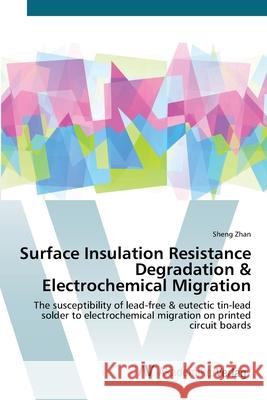Surface Insulation Resistance Degradation & Electrochemical Migration » książka
Surface Insulation Resistance Degradation & Electrochemical Migration
ISBN-13: 9783639384208 / Angielski / Miękka / 2012 / 132 str.
Revision with unchanged content. Widespread adoption of lead-free materials and processing for printed circuit board (PCB) assembly has raised reliability concerns regarding surface insulation resistance (SIR) degradation and electrochemical migration (ECM). As PCB conductor spacings decrease, electronic products become more susceptible to these failures mechanisms, especially in the presence of surface contamination and flux residues which might remain after no-clean processing. Moreover, the probability of failure due to SIR degradation and ECM is affected by the interaction between physical factors and chemical factors. Furthermore, the mechanism of electrochemical migration is not completely understood. In this book, the following research accomplishments are described: 1).Long-term temp-humidity-bias (THB) testing over 8,000 hours assessing the reliability of printed circuit boards processed with a variety of lead-free solder pastes, solder pad finishes, and substrates. 2).Identification of silver migration from Sn3.5Ag and Sn3.0Ag0.5Cu lead-free solder, a completely new finding compared with previous research. 3).Established the role of path formation as a step in the ECM process, and provided clarification of the sequence of individual steps in the mechanism of ECM. 4).Developed appropriate accelerated testing conditions for assessing the no-clean processed PCBs susceptibility to ECM











